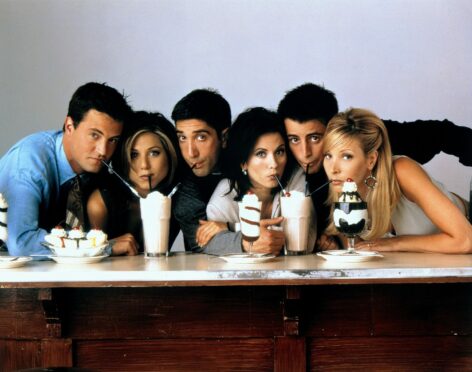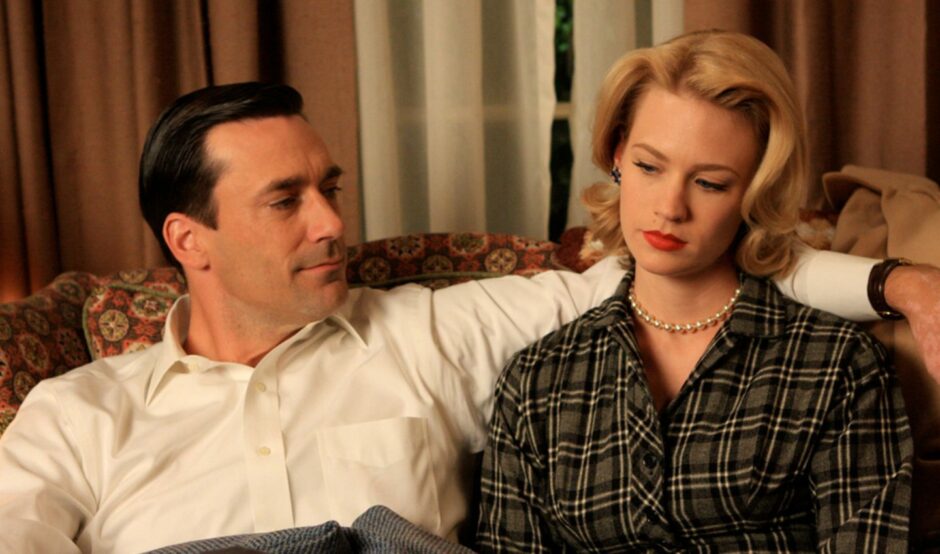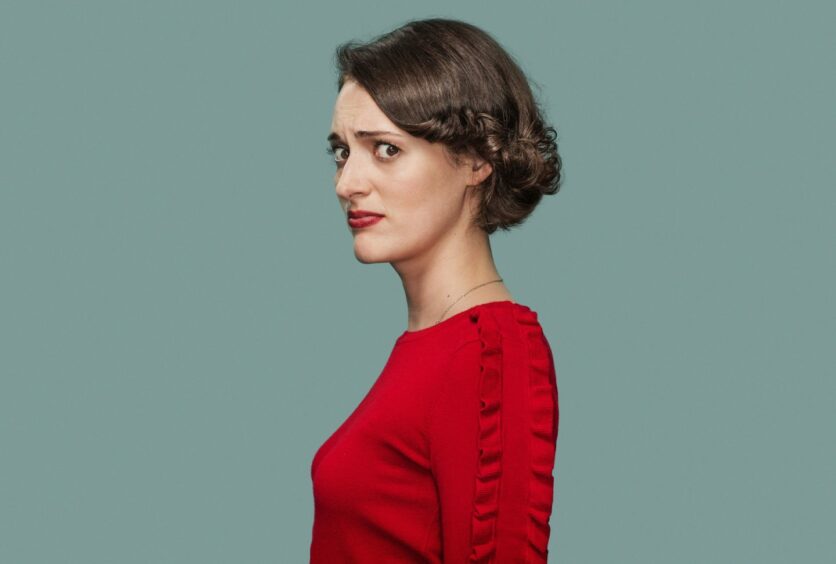
If you’ve ever wondered why Ross Geller from Friends can’t swallow his pride, why Breaking Bad’s Walter White is always in his underpants, or why Don Draper in Mad Men just can’t stop himself from cheating, a new podcast may just have these answers for you.
Shrink the Box explores 12 complex characters across TV including the likes of Succession’s Shiv Roy and The Sopranos’ Tony Soprano, delving into what makes a good character, why they behave the way they do, and why we love certain ones more than others.
The weekly podcast, hosted by psychotherapist Sasha Bates and actor and comedian Ben Bailey Smith, will put characters ‘on the couch,’ analysing why their behaviour causes them so much drama, and why we find it so fascinating.
“Each week, we will look at a different character both Ben and I love and have been intrigued by for our own reasons,” explained Bates.
“From a psychotherapy standpoint, I will be looking at this character as if they were my client. What would I be seeing, thinking and what would I be wanting to know from their behaviour.
“So we’ll both approach them from our own knowledge base – he’ll look at it from writing characters and from his own experience of therapy, and I’ll add insight from my training and work on the other side of the couch. We’ve definitely got lots to chat about!”
Interest in complex, relatable characters could be in relation to the fact more Brits are choosing to voice their own worries than ever, and embrace others who do, thinks Bates.
People from the UK might be known for their ‘stiff upper lip’ and ‘keep calm and carry on’ mentality, but data shows that attitudes to this are changing. 1.5million people accessed the NHS’s improved access to psychological therapies (IAPT) program in 2020-2021 with 1,440,183 self-referrals.
Prince Harry has also talked candidly about his use of a therapist, with his cathartic confessional Spare becoming the fastest selling non-fiction book on record. The success of shows like the BBC’s Couples on the Couch, and new drama Shrinking starring Harrison Ford all about what happens when a therapist dealing with grief offers brutally honest advice to others, also show our thirst for talking about feelings is not waning.
But what has made us start to bring down these walls and normalise not being okay and as a result, enjoy these characters who are also complex and not okay? In Bates’s mind, the pandemic had a lot to do with it.
“Particularly since Covid, I think there has been a shift. During that time, everybody became very aware of their own limitations and stumbling blocks,” she said.
“We were all confronted with our own fears, trapped indoors, either alone or with people and we really had no escape from what we were feeling.
“But even before Covid, there had been a shift in mentality. The Royal Family had come out and discussed mental health, and then there was this rise of documentaries with celebrities talking about a range of issues, from body dysmorphia to battling depression or anxiety.
“And I think people like to see themselves reflected in what they see on TV, and to realise, oh okay this is actually normal what I’m feeling.
“And even though a character is fictional, they are always a product of some form of reality. So even seeing an actor play out something on screen, although we know it’s not technically real, we can see ourselves in it.
“That is for me, what makes a good character: someone that is nuanced, that has layers, that is imperfect and has problems and issues but is also human and actually reflects how we really behave.
“Walter White for example, would not be nearly as interesting a character, if he wasn’t just a normal teacher who found himself in the situation he was in. It helped to put the audience in his shoes.
“That’s why we chose the characters we did for the podcast and why we chose such a range of different people to discuss.
“We wanted to look at people who feel like they’ve really done the rounds, who have dealt with some sort of a crisis, and they’ve got strength and agency and are actually fascinating to talk about. That’s the type of characters we all love.”
Shrink the Box, on all major streaming platforms
On the couch
Here Sasha Bates offers her insight into three of the fictional characters under the spotlight on the Shrink The Box podcast.
Don Draper
“The character of Don, above, in Mad Men, played by Jon Hamm, is a truly fascinating one because he’s playing a character within a character as he is quite literally pretending to be someone else, having stolen an identity and living a false life. He’s constantly terrified that the real him is going to be found out.
And I think this is something that so many of us can relate to – in that we have different personas for different spheres of our lives. Our work selves versus our private selves for example are often very different.
And Don is almost the extreme of this – he wears his fancy suits, drinks his martinis and sells images for a living – but we as the audience also get glimpses of who he really is and it’s far from this swanky facade he puts on, which makes him such an incredibly interesting character to watch and invest in.”
Fleabag
“Phoebe Waller-Bridge’s iconic character, above, sums up the sort of person that we’re really interested in this series because she is completely of the moment now. She shows us a person that we can all relate to – that we all know or maybe are.
That sort of person who’s a bit messy, but also talented. Again, her friendships are really important and she has so many flaws you know she’s not perfect.
She can be cruel and insensitive. She can be self-obsessed, but she’s also kind and loving, just like everyone can be. She sums up that humanness of not being wholly one thing or another and I think that’s why people love her so much.”
Ross Geller
“On the surface, you could look at Ross in Friends, played by David Schwimmer, left, as being a bit of a comedic, one-dimensional, sitcom character with not much depth except to make us laugh.
But when you actually analyse his behaviour and the interactions he has with the other characters on Friends you start to see there’s this really anxious, insecure person who’s desperate to be liked.
And I think there’s a lot for people to relate to in that. As well as the character of Ross, we’ll also be taking a look at his relationships with the other characters in the show and how important his friendships and family are to him, so we’ll cover quite a lot within that episode.”

Enjoy the convenience of having The Sunday Post delivered as a digital ePaper straight to your smartphone, tablet or computer.
Subscribe for only £5.49 a month and enjoy all the benefits of the printed paper as a digital replica.
Subscribe © SYSTEM
© SYSTEM © SYSTEM
© SYSTEM